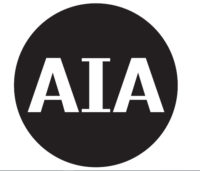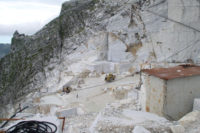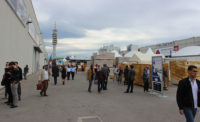A major new study
produced for the Marble Institute of America (MIA) takes an intimate look at
how the international natural stone industry will fare over the next five
years, including potential trends in mergers and acquisitions, growth
potential, capital spending, the perception of U.S trade policies and
more.
Conducted and compiled for MIA by the Hudson Economics Group, Ltd. (HEG), this
important new study follows another major industry study conducted five years
ago, also by HEG, said Gary Distelhorst, Executive Vice President and CEO of
MIA.
“This new study, called the 2010 Survey of the Natural Stone Industry, can be a
powerful resource for quarriers, distributors and fabricators as they ponder
future directions of the business,” Distelhorst said. The survey, based on
hundreds of personal interviews, is now available from MIA for $500 per
copy.
“One of the most compelling things about the study is the diversity of opinion
on U.S.
trade policy around the world,” said Lloyd Henry of the Hudson Economic Group.
“It is also interesting to note the number of companies which are planning to
spend capital in this year and the next five years.”
“Obviously, the dynamics of the global stone industry have changed over the
past five years, especially with China emerging as a major player in
the stone supply arena,” Distelhorst said. Five years ago, he noted, the survey
pointed to the Euro as a currency that offered hopes for a quick return on
investment.
“Those days have come and gone,” the survey summary states. “The Euro is in
trouble, in the short term. However, it seems as though the dollar is still
holding its own, when measured against the other currency
values.”
The summary cautions that the Chinese Yuan may soon start escalating in value,
thereby making purchases from China
more expensive. The possibility bears watching.
With currency values always changing, and the industry heavily based on foreign
imports of stone, the summary suggests that it may make sense for stone
industry companies to actually develop policies on stone in relation to
currency values, which could give companies a competitive
advantage.
The survey focused on respondents in Asia, Central America and the Caribbean,
Europe, North America and South America, and there are sections on each of the
geographic areas. In North America, for
instance, almost 55% of the respondents said they were affected by currency
exchange rates, while 58.3% said that American trade policies were “average,”
and 18.3% rated them as “good.”
A majority (62.5%) of North American respondents said they would be investing
in their companies in 2010. Almost a third said they were unsure about the
investments, and 21.7% said they would be buying equipment. Roughly that same
percentage of one out of five listed potential investments in property and
human resources.
“There are a lot of people planning to spend this year, which may indicate the
recovery for the industry,” the survey said.
The survey can be ordered online at www.marble-institute.com or by calling MIA
at 440-250-9222.
NEW STUDY SHEDS LIGHT ON STONE INDUSTRY TRENDS FOR NEXT FIVE YEARS . . .


